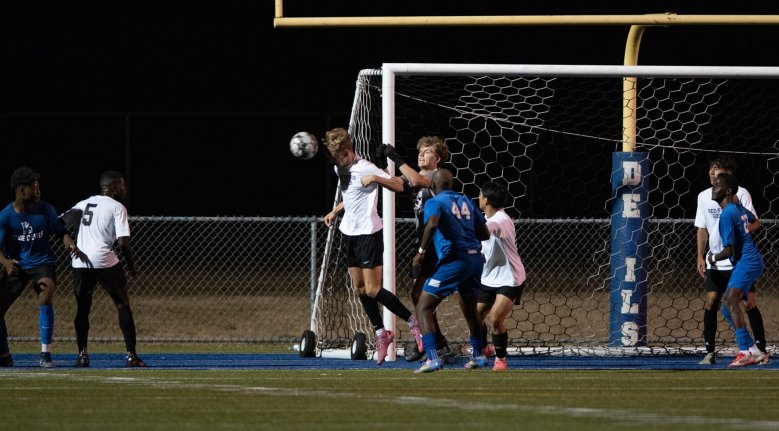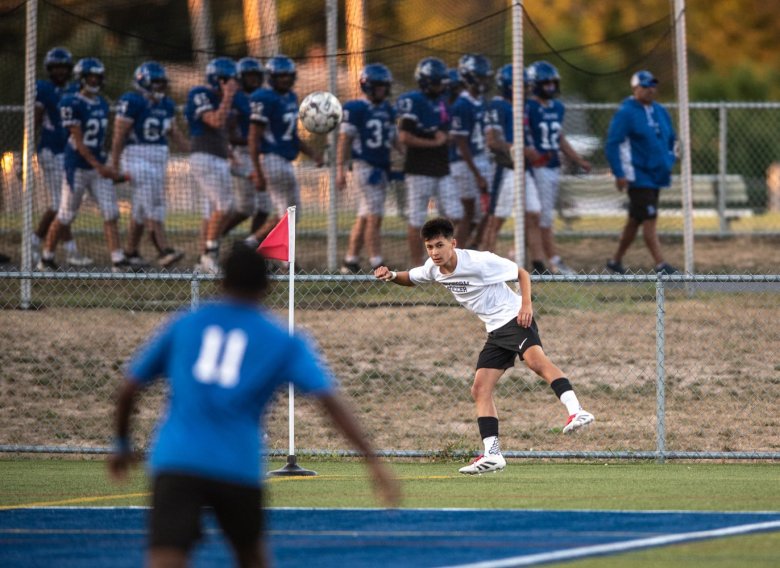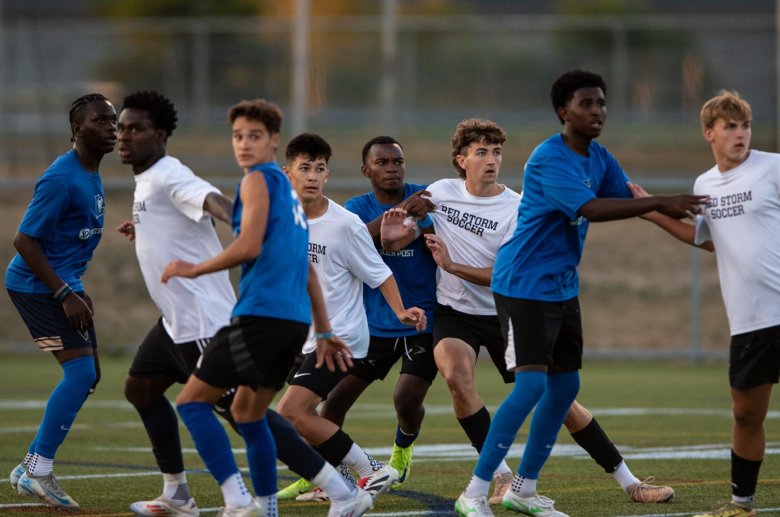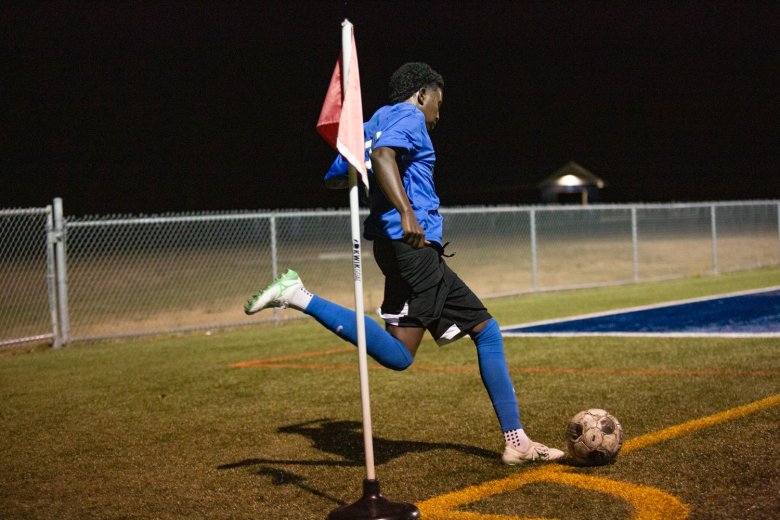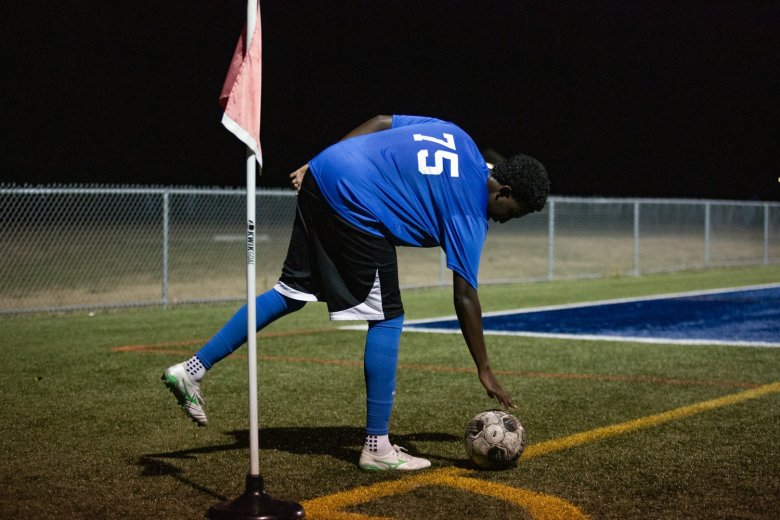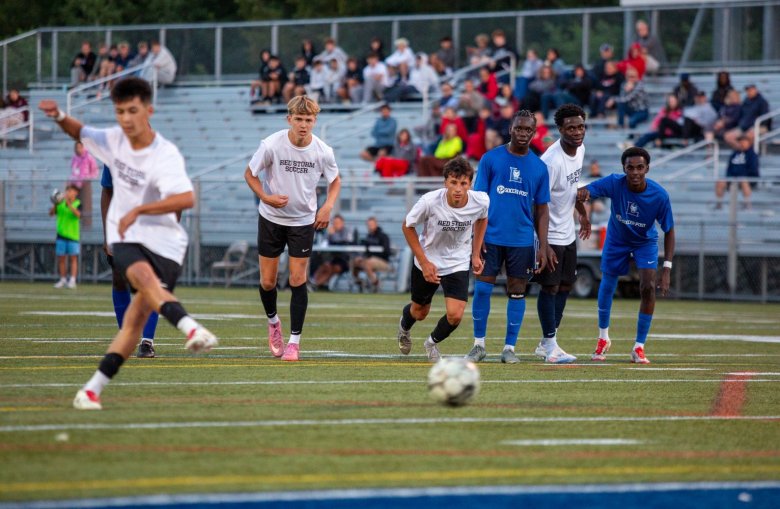
He hadn’t been Hall-Dale boys soccer’s primary option on corners kick at any point last fall. Reid Parlin, though, had the trust of his coach – a trust that yielded gold for the Bulldogs.
Wanting Jaxon Olsen’s size and aerial ability in the box, Hall-Dale coach Jesse Rowe swapped out his star senior as the player who takes corner kicks in the week leading up to the Class C state final against Washington Academy last November. Olsen’s replacement was Parlin, who delivered a perfectly placed corner that Karter Eldridge headed home for the go-ahead goal with 24:10 remaining, lifting the Bulldogs to their first state title.
“One of the biggest things we were looking at was our set-piece takers, and every time we did it in practice, I would just hit Karter on that back post,” Parlin recalled recently. “When I went up to take it, I just saw him there right in the middle. With how the wind kind of carried it right to his head, it just worked out perfectly.”
Although much of soccer is built on possession, passing, and timing runs to produce goals from open play, it’s often set pieces that can make or break games. Executing on offense and defending against corner kicks, free kicks and even throw-ins is an art form, one that factors significantly into how teams strategize and see the game.
For 30 years, set pieces have been a defining feature of Mike Andreasen’s Greely teams. In 1994, his Greely girls scored all three goals in a 3-0 Class A state title game win over Cony off corner kicks. Last year, an Owen Piesik header off a corner sealed Greely’s 3-0 victory over John Bapst in the Class B boys state final.
Andreasen emphasizes winning set pieces, noting how the pause in action resulting from a corner, free kick or throw-in provides a chance to set up an attacking threat. At the other end of the pitch, he tells his players to avoid conceding set pieces at all costs — even when the alternative might be risky.
“I see it as kind of like a timeout in football,” Andreasen said. “When I’m watching football, I always hate it when the team on defense in the red zone takes a timeout when the offense has none left; I think that’s an offensive advantage that lets them get set up. It’s the same thing here, and when we play some of these teams, we’ll give them anything other than a corner kick.”
Still, conceding a corner or free kick is inevitable at some point, and that’s where marking and communication become key. A good goalkeeper can see where attacking players might be able to find space in the box, and when the kick is taken, that keeper must decide quickly whether to call his defenders off or into action.
If that sounds obvious, assessing the threat instantaneously in real time can be a difficult task. Following Lewiston’s scrimmage last week against Scarborough, goalkeeper Will Diamond-Stanic noted that the Red Storm took their set pieces in a manner that gave him headaches.
“I have a system where I’ll yell, ‘Keep!’ if I want to go get it and, ‘Away!’ if I want my teammates to get it, but the way they did their kicks made that hard to predict,” Diamond-Stanic said. “It’s hard to describe, but the way they did it, it kept skimming off of even our defenders heads instead of going out. You want to be able to make that distinction, but it’s tough sometimes.”
Not only are Scarborough’s set pieces difficult to defend, the Red Storm are also adept at defending them at the other end. In last year’s Class A South semifinal against Deering, the Rams went 0 for 8 in the first half on corners. Scarborough’s 2-0 win included a goal scored off a set-piece counterattack.
A point of discussion for Lewiston during that Scarborough scrimmage, senior Bakar Ibrahim said, was whether the Red Storm’s defensive wall would jump or not on the Blue Devils’ free kicks. Wall jumping used to be more predictable, but as fellow Lewiston senior Pedro Sebastião notes, one of the greatest players of the 21st century changed that.
“The first person to (shoot under the wall) in the (professional) game was Ronaldinho, and since then, the wall sometimes doesn’t jump,” said Sebastião, Lewiston’s primary free kick taker. “If you try to go underneath when the wall doesn’t jump, you’ve basically wasted your chance, so I just go over the wall. … It can be (a guessing game).”
Frequent difference makers
Scarborough coach Mark Diaz said a team’s ability to score can vary greatly from year-to-year. Whereas a team might have several players skilled at setting up and scoring goals one season, that might not be the case the next. For the less-prolific offensive teams, set pieces are particularly crucial.
“Certain years, if you have a team that can’t score as well from the run of play, you’re going to spend more time on those set pieces,” Diaz said. “I think, generally, if you could average a goal a game (from set pieces) in a 14-game season, that would be nice.”
That number is far from unachievable. In the English Premier League last season, six clubs scored 15 or more goals from set pieces; in the 2018 World Cup, set pieces accounted for 43 percent of goals. While players and coaches estimate those figures are much smaller in Maine high school boys soccer, set-piece goals still happen frequently.
“Two years ago, we were terrible at defending set pieces, specifically corner kicks; I think we had 10-12 goals scored on us on our corners,” said Waterville coach Dylan Dillaway. “We really made it one of our focuses since then to figure out a zone or a man-to-man way to defend those corner kicks. It’s just such a big part of the game.”
Throw-ins can be a factor, too. Ellsworth coach Brian Higgins, who won a state-record 566 games along with 18 regional titles and four state championships from 1974-2015, built a dynasty off of his teams’ ability to throw the ball directly into the box. These days, Mt. Ararat has become known for it under coach Jack Rioux.
“I’ve been really fortunate the last 11 years to always have a guy that can do that,” Rioux said. “It’s a huge part of what we do. Anytime you have a situation like that where guys are generally more accurate with their hands than their feet to get it into the box and create chances, that’s a big difference-maker.”

